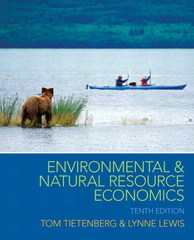Question
Assume that country M is a capital-abundance large-country. Country M produces Steels (S) and Foods (F). Suppose steel is a capital-intensive product, while food is
Assume that country M is a capital-abundance large-country. Country M produces Steels (S) and Foods (F). Suppose steel is a capital-intensive product, while food is a labour-intensive product.
a. Country M will export ...... (which product?) because ............ (2 marks)
b. Country M will import ...... (which product?) because ........... (2 marks)
c. Draw a general equilibrium diagram depicting the situation free international trade for Country M. (1 mark)
d. Suppose stock of capital increases in Country M, while the population (or input labour) is fixed.
i. Assuming there is no change in the term of trade, explain the effect of increased capital stock on production of steels (S) and production of food (F) in country M (the production effect). (3 marks)
ii. Explain the effect of the change in production on trade in country M (the trade effects of production). (3 marks)
iii. Suppose capital growth also causes the consumption of goods S and the consumption of goods F to increase by the same amount. Explain the effect of the change in consumption on trade in country M (the trade effects of consumption). (2 marks)
iv. Explain the combined effect of production and consumption in (ii) and (iii) on the volume of trade for country M (the total trade effects). (2 marks) v. Explain the effect of changes in trade volume in (iv) on the term of trade for country M (the term of trade effects). (3 marks)
vi. Discuss the effect of this capital growth on per capita income in country M (the income effects). (3 marks)
vii. Assume that effect in (vi) exceeds effect in (v). Explain the net welfare effects for country M due to capital stock growth. (2 marks)
viii. Illustrate the situation (vii) in the complete diagram. (Note: Can draw in the same diagram in question (c) or in separate diagram). (2 marks)
e. Define the immiserizing growth. (1 mark)
f. For question (d) above, is there a possibility of immiserizing growth? Explain your answer. (2 marks)
g. Illustrate the immiserizing growth situation in the appropriate diagram. (Note: you can show the immiserizing growth situations in the same diagram in Question d(viii) or draw in separate diagram). (2 marks)
Step by Step Solution
There are 3 Steps involved in it
Step: 1

Get Instant Access to Expert-Tailored Solutions
See step-by-step solutions with expert insights and AI powered tools for academic success
Step: 2

Step: 3

Ace Your Homework with AI
Get the answers you need in no time with our AI-driven, step-by-step assistance
Get Started


